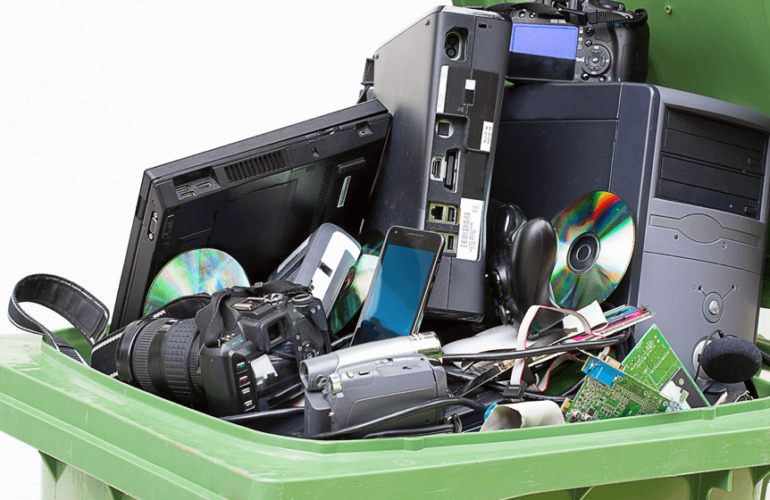Enviroexperts makes it simple to setup your business's e-waste recycling authorization.
Package Inclusions :-
Overview of E-waste Recycling Authorisation
The use of cutting-edge devices that are adaptable and are utilised for nearly everything has suddenly increased during the past few decades. But as electrical and electronic equipment (EEE) floods the market, a new type of waste that is bad for the environment and for human health is also on the rise. This type of waste is known as e-waste and is made of dangerous metals. E-waste (Management) Rules, 2016, in India, describe e-waste as Electrical and Electronic Equipment (EEE), entirely or in part, rejected as waste by users (individually or in bulk), and rejected from manufacture, refurbishing, and repair procedures. Additionally, the rule requires that anybody starting a firm in the nation receive an E-waste Recycling Authorization.
The Central Pollution Control Board (CPCB) has just released its most recent data, which show that India generated roughly 7.71 lakh tonnes in 2018–19, which jumped to 10.14 lakh in 2019–20, representing an increase of about 31%. For E-waste Recycling Authorization, any Producer/Importer or Brand Owner (PIBO) may submit an application.
Eligibility for obtaining an Authorization for Recycling E-Waste
To set up e-waste recycling units, one must obtain an E-waste Recycling Authorization. There are a few requirements that must be met in order to receive the authorization: –
Documents needed to obtain an authorization for recycling e-waste
Certain documentation must be submitted with the authorization request for the E-waste recycling facility. The following is the list of documents:
Additionally, if the business is a Pvt Ltd or Public Ltd Company, the following documents must be included in addition to the list listed above:
Board Declaration for Authorised Signator
Method for obtaining an E-waste Recycling Authorization
The process for acquiring an E-Waste Recycling Authorization from the State Pollution Control Board is governed by the E-Waste Management Act of 2016. (SPCB). Applying, having your application reviewed, and getting your licence are all steps in the process.
| Filing an Application | Submitting/Survey Application | Grant of License |
| The recycler must register on the SPCB website in order to submit an application. Following registration, the E-Waste Recycling Authorization Application must be completed with all required information, including the Name of the Recycling Unit, Details of the CTO, and so forth. | After submission, the application is checked for authenticity and veracity by the District Environmental Engineer (DEE). The application and all required documentation are reviewed for errors and returned to the manufacturer for correction. | The authentication licence is finally issued if the application was filed without error and all the supporting documents were examined. |
E-waste Recycling Process
Recycling of electronic and electrical devices that have reached their end of life and are no longer useful is referred to as “e-waste.” If not managed effectively, this recycling process’ complex methodology has a high potential for increasing pollutants. E-waste is made up of a variety of materials, thus not every component can be recycled. However, some of the recyclable materials include:
In total, there are seven processes in the recycling of electronic waste:-
Collection and Transporting
The most importantly stage, even prior to beginning the reusing business, is to gather the e-squander from shoppers. This is finished by laying out reclaim corners and assortment focuses or making plans with nearby authorities to increment reachability.
Arranging
While gathering e-squander is a significant stage, the reusing system begins with arranging all the gathered waste.
Destroying
Subsequent to arranging all the waste, the following stage includes manual destroying. This step requires actual work as the destroyed material is separated into two classes, one being waste which can be reused, while other classification is of reused material.
Process for lessening enormous sizes
The waste which can’t be additionally destroyed is destroyed alongside other destroyed squander.
Cycle of decreasing to the little size
In the wake of destroying the loss to a significant size, the better e-squander particles are spread uniformly on the transport line. These are then separated further.
Attractive detachment
The attractive materials from e-squander are then isolated through a goliath magnet. These materials can contain iron.
Division of non-metallic and metallic parts
In the wake of eliminating attractive materials, squander reusing further returns to isolate metallic and non-metallic components. Right now, the e-squander is just left with non-metallic particles.
Detachment through the water
The plastic substance is isolated from the glass with water at the last phase of the reusing system. Afterthis, the material recovered is exchanged for reuse.
Advantages of E-Waste Reusing
E-waste reusing is valuable for entrepreneurs to fabricate a beneficial market and for monetary additions, and for the overall population and the state in numerous ways.This is on the grounds that e-squander reusing adds to Natural Security by appropriately overseeing one of the most harmful materials containing noxious metals like lead, mercury, and arsenic. Alongside this, the e-squander reusing unit likewise fosters another field which helps in monetary improvement by setting out more work open doors for individuals.
How could Enviroexperts help you?
| Help with Documentation | Comprehensive Insight | Consistent Correspondence |
| Enviroexperts offers help for all the lawful help and necessities with respect to setting up your business in India. Find support from natural specialists effectively under one rooftop. | Our group knows and grasps the significance of your business to you. We give comprehensive help from the very beginning till the finish of your business foundation venture. | Enviroexperts specialists are known for their skillful hard working attitudes. We guarantee that our correspondence with our clients is in every case fast, positive and consistent. |




